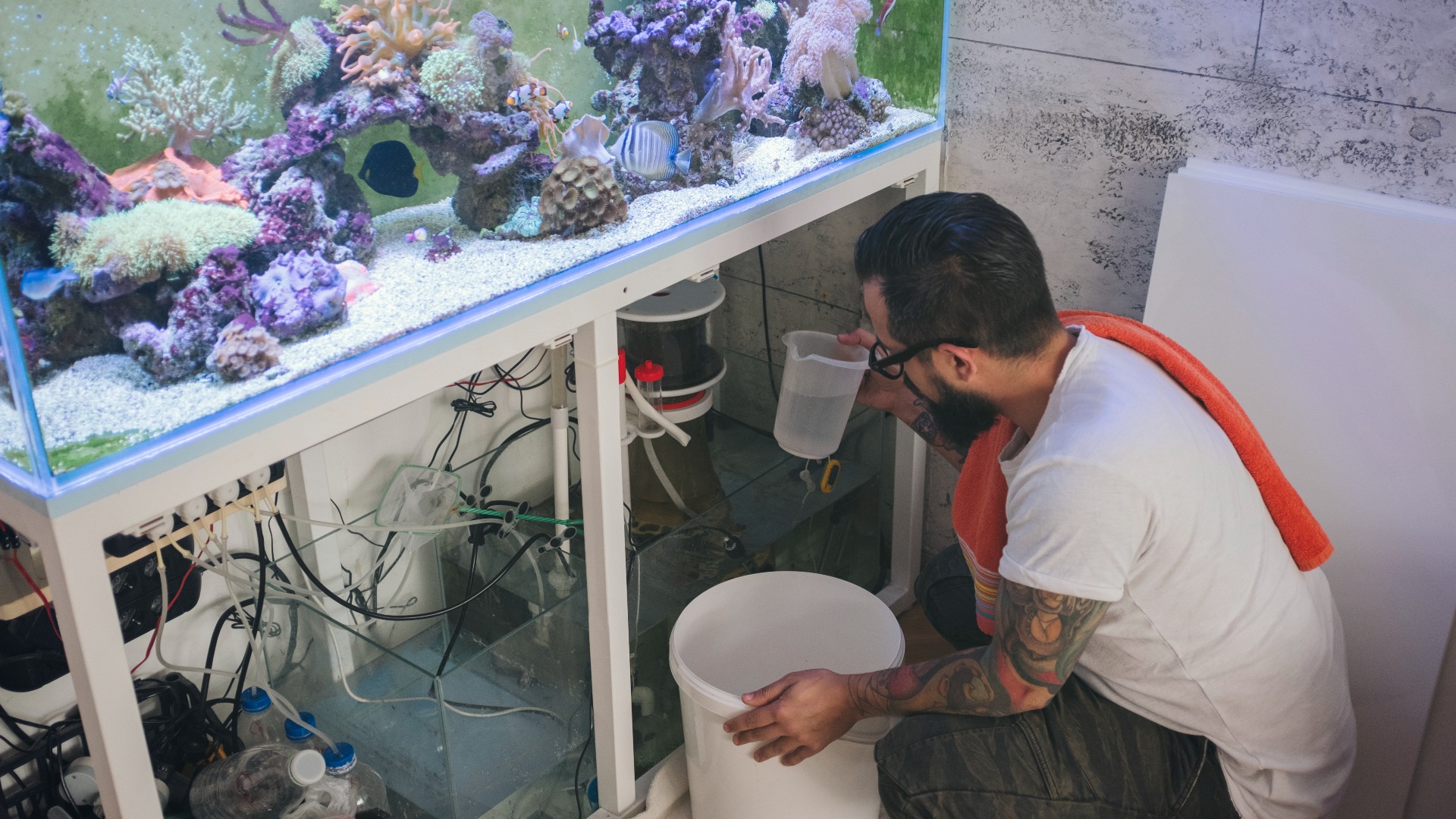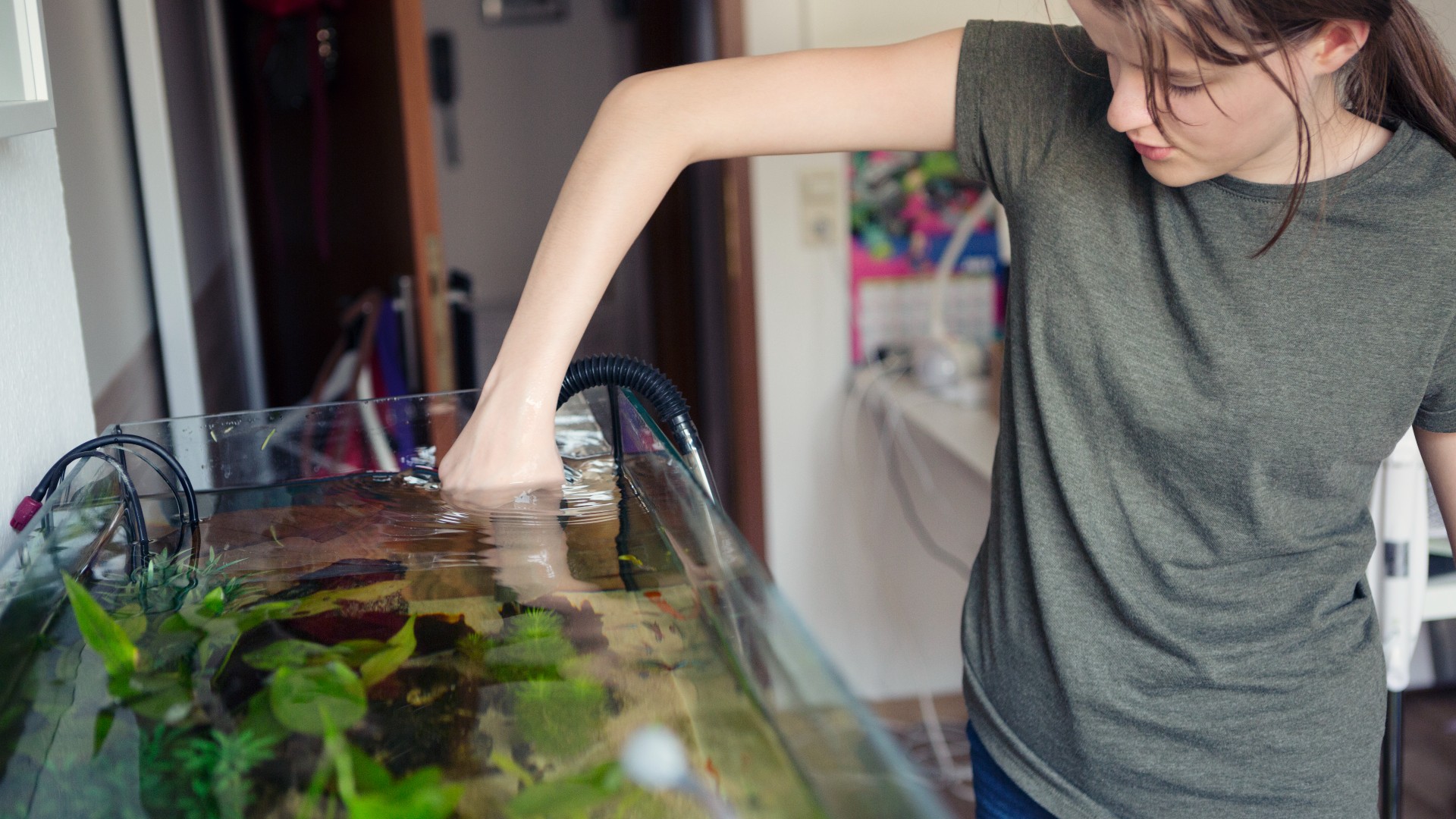How to fix a leaking fish tank with or without draining
If you’re worried about a leaking fish tank, it’s important to know how to prevent it and what to do if it happens

A leaking fish tank is every aquarist’s worst nightmare. A fish tank can be a wonderful addition to your home, but it needs to be maintained so there is no leaking and your fish stay safe and healthy.
Leaks are no joke. The damage can not only be expensive, but it puts your fish at risk. Fortunately, there are ways to prevent leaks and, if they do happen, to deal with them as quickly as possible so that the glass does not crack or break, ending in disaster.
After all, a pinhole leak can turn into a much bigger problem if left. Read on to find out how to fix a leaking fish tank before it’s too late.
- Best fish tank: Stylish abodes for your aquatic amigos
- How to clean a fish tank
- Best small fish tank: Petite pads for your tiny tribe
Why do aquariums leak?
Leaks in aquariums are not usually from cracks in the glass. Instead, they tend to stem from sealant that has either not been put on properly or has become worn over time.
The sealant is what holds the sides of the tank together so if it is peeling away from glass, water will leak out. However, leaks can also be caused by cracks forming where the glass is weak.
If the tank is not on an even surface or if there is a fault with the water pump the pressure can cause cracks at the bottom of the tank. Cracks can also occur from impacts such as children hitting the glass from the outside, or boulders or driftwood from within the tank.

How to find the leak in a fish tank
There are a number of ways to find the leak in your tank:
Get the best advice, tips and top tech for your beloved Pets
- If the leak has been caused by impact or there’s a big puddle under the tank you should be able to see the source of the leak. If not, keep a check on the water level and if you notice it has dropped carry out a leak test. Dry the tank and then use a marker to mark the level of the water. Then fill the tank with more water and keep an eye on it for the next 24 to 48 hours. If it is still leaking, the crack is below the marker.
- You may also want to inspect the silicone holding the tank together. If you find peeling silicone that is particularly worn, you’ll probably find your leak too. If the crack is at the bottom of the tank another way to find the leak is by drying off the tank and then wrapping a paper towel around it to find the wet spot.
- You can also use food coloring or water-based dye that is not toxic to your fish to spot where the water is flowing out.
- If this doesn’t work, take your fish and accessories out of the tank and put them into a holding tank or bucket with a filter or air stone. Then take a look at how much water is left in the tank. If it is still leaking the leak will be below the water line still.
Once you have found it you need to decide whether you can fix it as is, or whether you need to drain the tank to repair it.
Materials for fixing a fish tank
- Containers to hold your fish
- Felt tip or marker
- Paper towels or a soft cloth
- Single-edged razor blades or sharp tool for removing sealant
- Acetone
- Non-toxic 100% silicone sealant
- Caulking gun
- Emery cloth or silicon carbide sandpaper
How to fix a leaking fish tank from the bottom by draining it
If the leak is at the bottom of the tank it’s best to drain it before repairing the tank. Remove the fish first and place them in a holding tank or buckets with a filter. Next remove all of the décor and the water. Once this is done continue with the same steps as below for fixing the leak.

How to fix a fish tank leaking from the top without draining it
If the leak is at the top of the fish tank or above the water line, you don’t have to drain the tank completely to fix it. Just drain enough so you are able to clean and dry the area around the leak. Do this using a paper towel or a soft cloth. Then follow the steps for repairing the leak.
- Scrape off the old sealant using a razor blade. Make sure to do this carefully so it all comes off, as otherwise the new sealant will not stick properly to the tank. If you haven’t drained the tank make sure not to drop any sealant into the water.
- Using a damp cloth and acetone clean the area around the leak to get rid of any residue. Wipe it dry with a paper towel and then leave to dry completely for 15 minutes.
- Using a caulking gun, if possible run a line of silicone along the damaged seam from the inside of the tank as this is more effective than applying it on the outside. Then use your finger or a caulking tool to smooth it down so it covers the leak completely. You must use non-toxic 100% silicone as otherwise you could poison your fish.
- Leave the sealant to dry for 24 to 48 hours. Once it is fully dry refill the tank and check again for leaks.
- Finally, restore your fish and décor to the tank.
How to prevent your fish tank from leaking
You can avoid having to fix a leak by ensuring you do everything you can to prevent it happening in the first place. Here are a few preventative measures:
- When you buy your fish tank make sure you check it for leaks before putting your fish in it and be careful when buying second hand that you check the glass and silicone carefully.
- When setting up your aquarium make sure it is level so that the water pressure is distributed evenly.
- Make sure you buy a non-return valve for your air pump so that if the power goes out, the pump doesn’t start pumping out water instead of air.
- Check the state of the tank’s silicone, clean and inspect the glass and carry out leak checks regularly.
- If you do get a leak make sure you fix a large enough area so that it doesn’t happen again, use enough silicone sealant and leave it to dry for long enough. Check the glass edges are aligned evenly and that the tank is on a flat surface, and don’t fix it in humid conditions.

